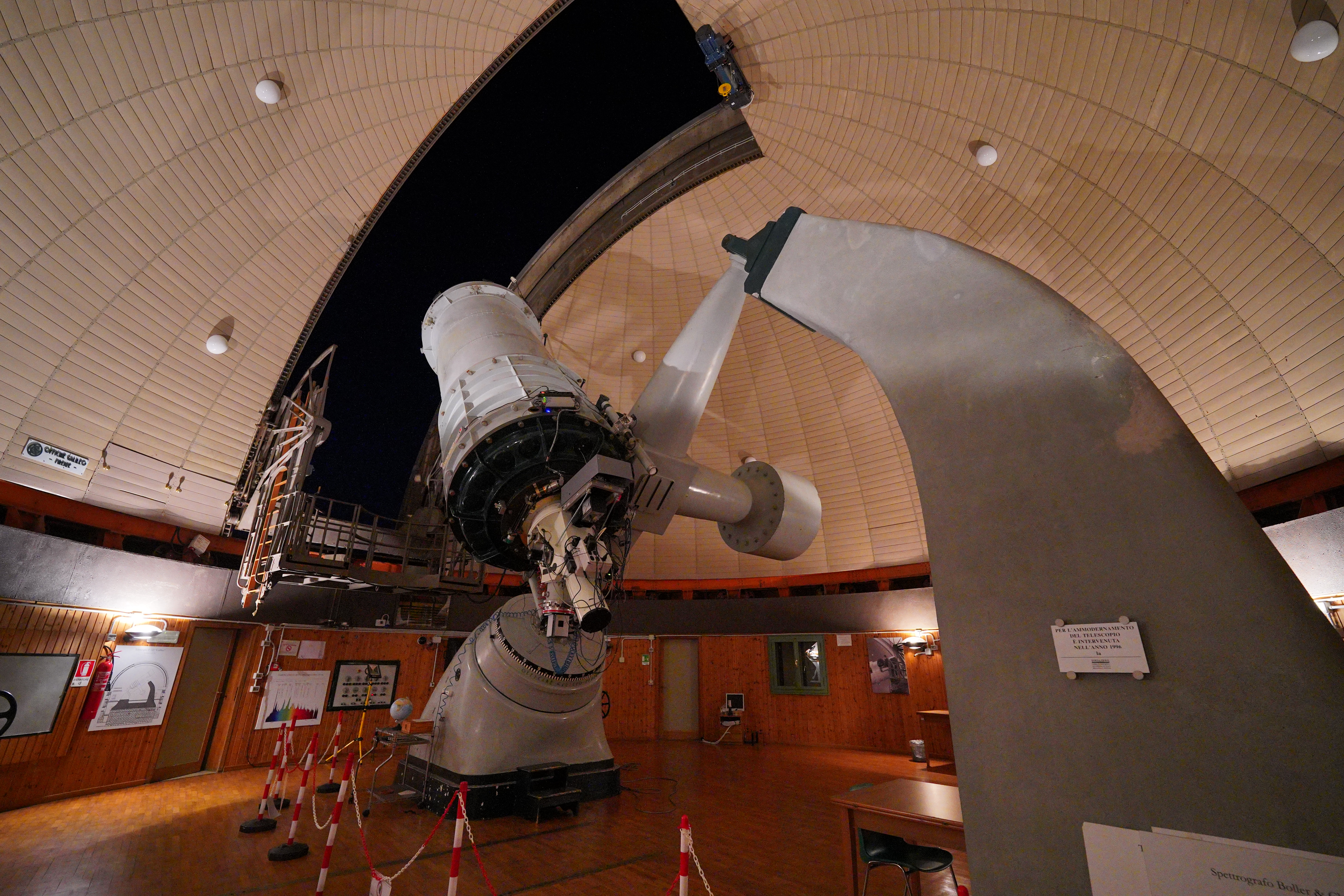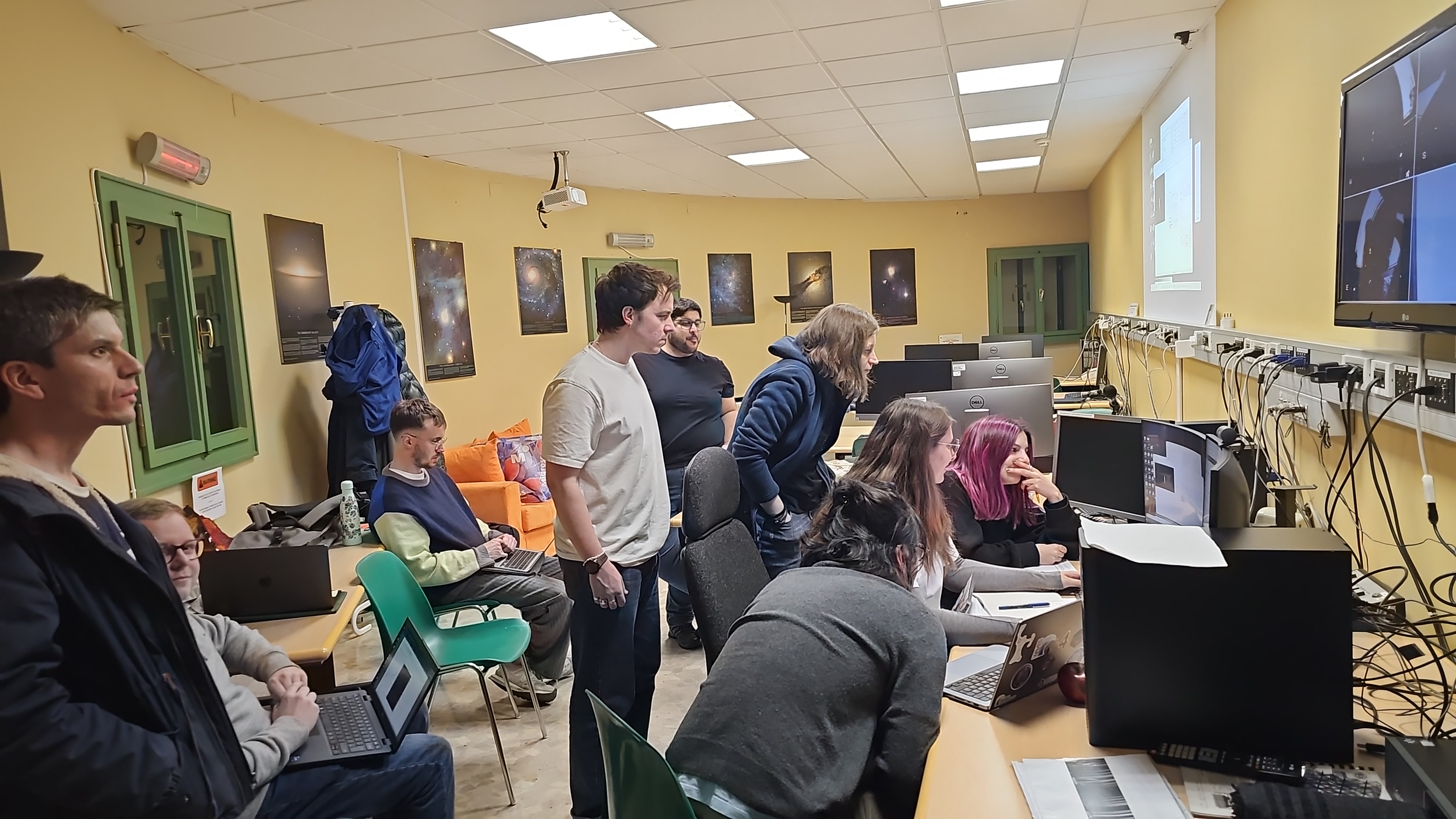SITCOM Observing School
by Harry Addison on 2025-04-22

The 1.22m Galileo telescope used by the members of SITCOM during the observing school. (Credit Romain Lucchesi)
During the week beginning 7th April, nine members of SITCOM were hosted at the Astrophysical Observatory of Asiago for an observing school. For some members the school provided them with their first observing experience, while it gave other members a chance to refresh their observing knowledge.
During the school the team learnt the basics of observing, including how to determine if and when a target is most optimal to observe, the calibration data that is required for the data reductions, how to setup and observe using the 1.22m Galileo telescope at the Astrophysical Observatory of Asiago, and finally how to reduce the observations.
Using what they had learnt, they planned and executed three nights of observations using the 1.22m Galileo telescope. The team observed a number of targets including galaxies such as NGC4565 and M104, planetary nebular, binary stars, and transient events. In particular, the group observed three objects of high interest: Nova X SER, T Corona Borealis, and an unclassified supernova-like transient. The unclassified transient was initially classified as a supernova II and continues to be monitored by staff at the Astrophysical Observatory of Asiago.
The attending SITCOM members thank Marica Valentini for organising the school, and to the staff at the Astrophysical Observatory of Asiago for hosting.
